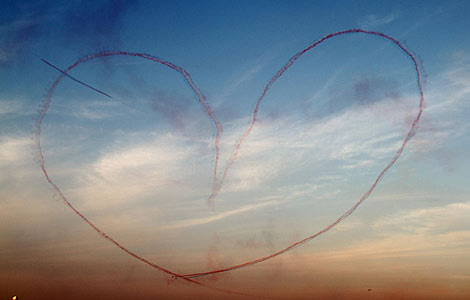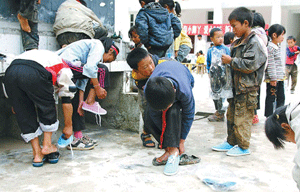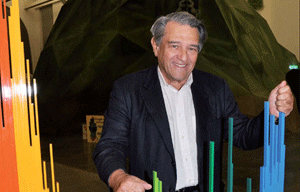Spies outed, CIA suffers in Lebanon
Updated: 2011-11-21 18:06
(Agencies)
|
|||||||||
Using the latest commercial software, Nasrallah's spy-hunters unit began methodically searching for spies in Hezbollah's midst. To find them, US officials said, Hezbollah examined cell phone data looking for anomalies. The analysis identified cell phones that, for instance, were used rarely or always from specific locations and only for a short period of time. Then it came down to old-fashioned, shoe-leather detective work: Who in that area had information that might be worth selling to the enemy?
The effort took years but eventually Hezbollah, and later the Lebanese government, began making arrests. By one estimate, 100 Israeli assets were apprehended as the news made headlines across the region in 2009. Some of those suspected Israeli spies worked for telecommunications companies and served in the military.
Back at CIA headquarters, the arrests alarmed senior officials. The agency prepared a study on its own vulnerabilities, US officials said, and the results proved to be prescient.
The analysis concluded that the CIA was susceptible to the same analysis that had compromised the Israelis, the officials said.
CIA managers were instructed to be extra careful about handling sources in Lebanon. A US official said recommendations were issued to counter the potential problem.
But it's unclear what preventive measures were taken by the Hezbollah unit chief or the officer in charge of the Beirut station. Former officials say the Hezbollah unit chief is no stranger to the necessity of counterintelligence and knew the risks. The unit chief has worked overseas in hostile environments like Afghanistan and played an important role in the capture of a top terrorist while stationed in the Persian Gulf region after the attacks of 9/11.
"We've lost a lot of people in Beirut over the years, so everyone should know the drill," said a former Middle East case officer familiar with the situation.
But whatever actions the CIA took, they were not enough. Like the Israelis, bad tradecraft doomed these CIA assets and the agency ultimately failed to protect them, an official said. In some instances, CIA officers fell into predictable patterns when meeting their sources, the official said.
This allowed Hezbollah to identify assets and case officers and unravel at least part of the CIA's spy network in Lebanon. There was also a reluctance to share cases and some files were put in "restricted handling". The designation severely limits the number of people who know the identity of the source but also reduces the number of experts who could spot problems that might lead to their discovery, officials said.
Nasrallah's televised announcement in June was followed by finger-pointing among departments inside the CIA as the spy agency tried to figure out what went wrong and contain the damage.
The fate of these CIA assets is unknown. Hezbollah treats spies differently, said Matthew Levitt, a counterterrorism and intelligence expert at the Washington Institute for Near East Studies who's writing a book about the terrorist organization
"It all depends on who these guys were and what they have to say," Levitt said. "Hezbollah has disappeared people before. Others they have kept around."
Who's responsible for the mess in Lebanon? It's not clear. The chief of Hezbollah operations at CIA headquarters continues to run the unit that also focuses on Iranians and Palestinians. The CIA's top counterintelligence officer, who was one of the most senior women in the clandestine service, recently retired after approximately five years in the job. She is credited with some important cases, including the recent arrests of Russian spies who had been living in the US for years.
Officials said the woman was succeeded by a more experienced operations officer. That officer has held important posts in Moscow, Southeast Asia, Europe and the Balkans, important frontlines of the agency's spy wars with foreign intelligence services and terrorist organizations.











